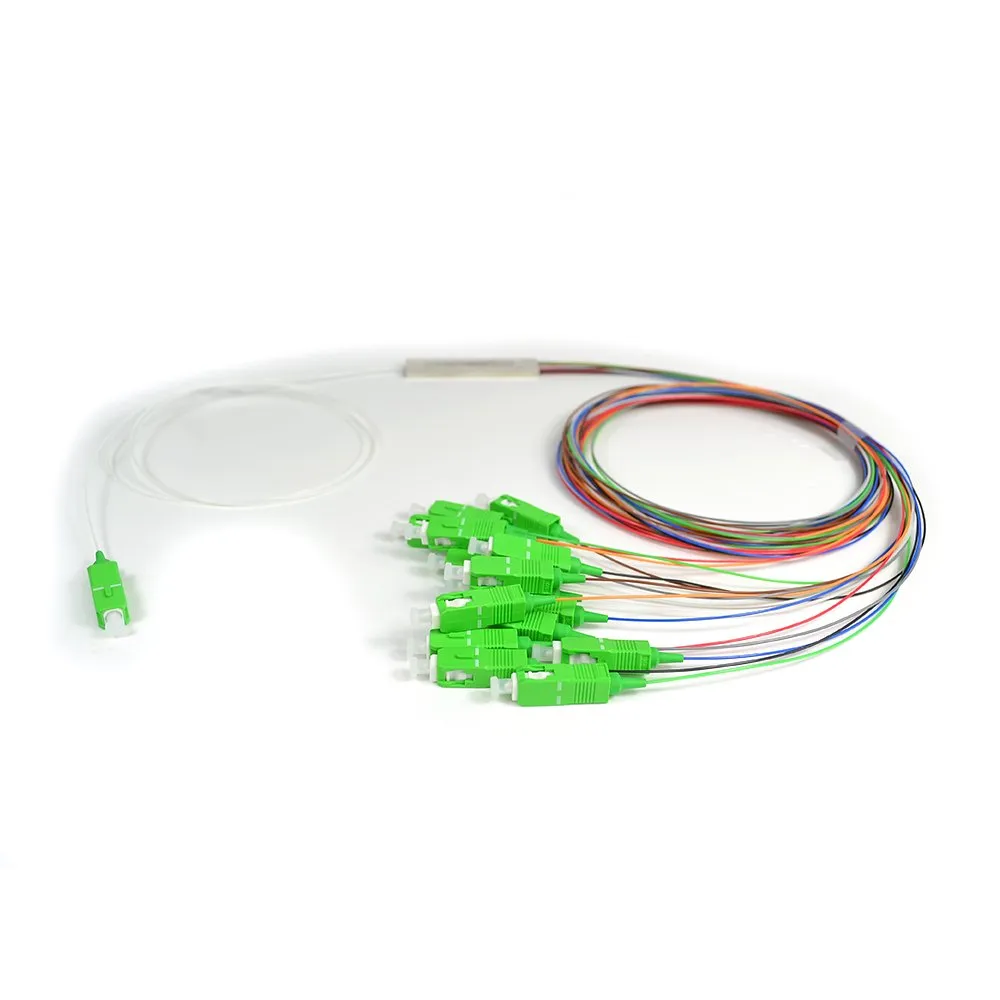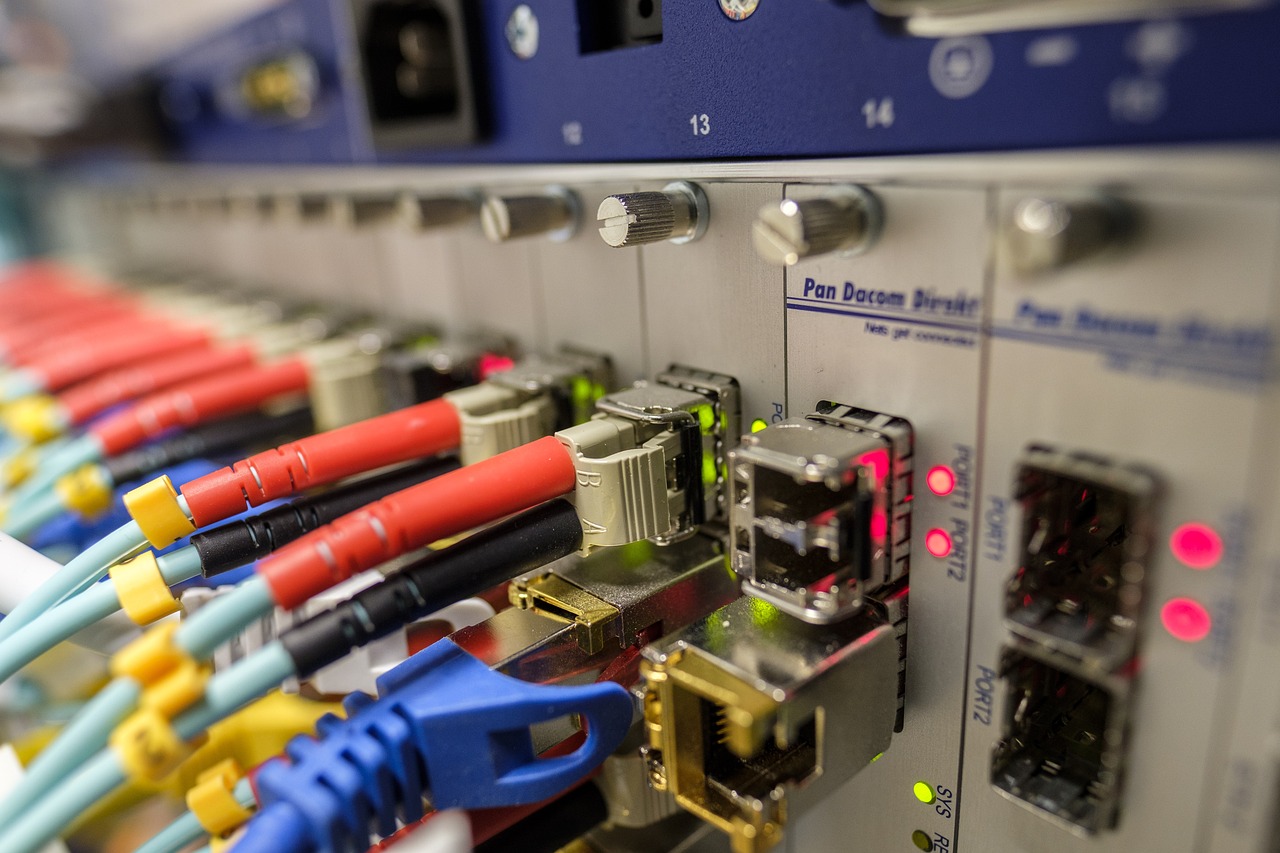A Comprehensive Guide to Finding 1x16 Color Coded PLC Splitter in Micro Type for Blockless Package with 900um Input
Understanding the Basics of PLC Splitters

In the realm of optical network technology, PLC splitters play a pivotal role in facilitating the efficient distribution and combination of optical signals. These devices are integral components that enable the seamless transmission of data across various network architectures.
What is a PLC Splitter?
Definition and Function
A PLC splitter, or Planar Lightwave Circuit splitter, is a crucial passive optical device used to divide an incoming optical signal into multiple output signals. This process is achieved through an intricate mechanism that ensures minimal signal loss and optimal signal integrity. The primary function of a PLC splitter is to enable the simultaneous transmission of data to multiple end-users or network segments without compromising signal quality.
Key Components of a PLC Splitter
The core components of a PLC splitter include a waveguide chip, input, and output fibers. The waveguide chip, often made from silica glass, serves as the primary medium for splitting the optical signals. Input and output fibers are meticulously aligned with the waveguide chip to ensure seamless signal propagation. These components work in harmony to facilitate efficient signal splitting while maintaining high performance standards.
The Role of PLC Splitters in Optical Networks
Distribution and Combination of Optical Signals
PLC splitters play a critical role in distributing optical signals from a single input to multiple outputs, thereby enabling connectivity across diverse network nodes. This capability is particularly valuable in scenarios where data needs to be transmitted to numerous endpoints simultaneously without degradation.
Supporting Wavelengths from 1260 to 1650nm
An essential feature of PLC splitters is their ability to support a broad range of wavelengths, typically spanning from 1260nm to 1650nm. This wide wavelength compatibility makes them versatile components within optical networks, allowing for seamless integration with various types of optical equipment and ensuring comprehensive coverage across different transmission scenarios.
By understanding the fundamental principles behind PLC splitters, one can appreciate their significance in optimizing optical network operations and enhancing overall connectivity.
The Significance of Color Coding in PLC Splitters
In the realm of optical network technology, the ColorCoded feature in PLC splitters plays a crucial role in enhancing installation efficiency and streamlining maintenance and upgrades. This innovative approach to color identification significantly contributes to the seamless integration and management of optical networks.
ColorCoded: Enhancing Installation Efficiency
The implementation of ColorCoding in PLC splitters serves as a fundamental strategy for simplifying identification processes during installation. By assigning distinct colors to individual fibers or ports, technicians can readily identify and connect the corresponding fibers without ambiguity. This streamlined approach minimizes the likelihood of errors during installation, thereby expediting the entire setup process.
Moreover, the utilization of ColorCoding substantially reduces installation errors by providing visual cues that guide technicians through the intricate process of connecting fibers. The clear differentiation facilitated by color identification mitigates the risk of misconnections or incorrect alignments, ensuring that each fiber is accurately integrated into the network architecture.
The Impact of Color Coding on Maintenance and Upgrades
The incorporation of ColorCoding in PLC splitters offers long-term benefits by easing future expansions within optical networks. During maintenance or upgrades, the distinct color assignments enable technicians to swiftly identify specific fibers or components that require modification or enhancement. This expedites the expansion process and minimizes downtime, ultimately contributing to enhanced operational efficiency.
Furthermore, ColorCoding streamlines troubleshooting processes by providing a visual reference for identifying potential issues within the network infrastructure. Technicians can efficiently trace and isolate problematic connections or components based on their designated colors, facilitating rapid resolution of any encountered issues.
By leveraging ColorCoding, organizations can optimize their installation procedures, enhance maintenance operations, and streamline troubleshooting processes within their optical networks.
Advantages of a Blockless Package for PLC Splitters
In the realm of optical network technology, the adoption of a BlocklessPackage configuration for PLC splitters offers multifaceted advantages that contribute to the seamless integration and efficient operation of optical networks.
BlocklessPackage: Maximizing Space Efficiency
The implementation of a BlocklessPackage design introduces a range of benefits that revolve around maximizing space efficiency within network infrastructure. The compact nature of blockless PLC splitters presents several advantages in terms of spatial optimization and streamlined deployment.
Compact Design Benefits
The compact form factor of blockless PLC splitters significantly reduces the physical footprint required for their installation. This space-saving attribute is particularly valuable in scenarios where network enclosures or distribution panels have limited available space. By minimizing spatial requirements, organizations can effectively optimize their infrastructure layout and allocate resources more efficiently.
Furthermore, the reduced size and weight of blockless PLC splitters enhance logistical flexibility during installation and maintenance activities. Technicians can maneuver and position these devices with greater ease, contributing to expedited deployment processes and minimizing operational disruptions.
Applications in Dense Optical Networks
The space-efficient attributes of blockless PLC splitters make them ideal components for deployment within dense optical networks characterized by high port densities and limited physical space. In such environments, the ability to maximize spatial efficiency becomes paramount to accommodate an extensive array of optical connections without compromising performance or accessibility.
By seamlessly integrating into densely populated network architectures, blockless PLC splitters enable organizations to achieve optimal resource utilization while maintaining high levels of connectivity across various network segments.
Reliability and Stability of Blockless PLC Splitters
Beyond their spatial advantages, blockless PLC splitters offer unparalleled reliability and stability, ensuring consistent performance even in challenging environmental conditions.
Protection Against Environmental Factors
The robust design of blockless PLC splitters provides inherent protection against environmental factors such as temperature fluctuations, humidity, and mechanical stress. This resilience safeguards the integrity of optical connections and minimizes the risk of signal degradation due to external influences.
Additionally, the enhanced environmental durability ensures sustained performance consistency over extended periods, making blockless PLC splitters well-suited for deployment in diverse operational settings with varying environmental demands.
Long-term Performance Consistency
Blockless PLC splitters are engineered to deliver long-term performance consistency under demanding operational conditions. Their robust construction and reliable signal propagation capabilities contribute to sustained signal integrity and minimal transmission disruptions over time.
This exceptional level of performance stability enhances the overall reliability of optical networks, providing organizations with a dependable foundation for seamless data transmission across their infrastructures.
Selecting the Right 1x16 PLC Splitter with 900um Input
When considering the selection of a 1x16 PLC splitter with 900um input, it is essential to understand the compatibility and performance aspects associated with the specific input size. The 900um input dimension plays a crucial role in ensuring seamless integration within the network infrastructure while meeting performance requirements.
Understanding 900umInput: Compatibility and Performance
Importance of Input Size in Network Design
The 900um input dimension signifies the outer diameter of the fiber, directly impacting its compatibility with various network components and enclosures. This dimension is particularly relevant in scenarios where space optimization and efficient cable management are paramount considerations. The compact nature of 900um input fibers enables their deployment in environments characterized by limited spatial availability, making them well-suited for dense network configurations.
Matching Splitter Input with Network Requirements
When selecting a 1x16 PLC splitter with 900um input, it is imperative to ensure that the chosen input size aligns seamlessly with the existing network infrastructure. Compatibility between the splitter's input size and other optical components, such as connectors and adapters, is critical for establishing reliable connections without compromising signal integrity. By harmonizing the input dimensions across different network elements, organizations can achieve optimal performance and operational efficiency.
Key Considerations When Choosing a PLC Splitter
Assessing Network Needs and Future Growth
An integral aspect of selecting a 1x16 PLC splitter with 900um input involves assessing current network needs while also considering potential future expansions. Organizations must evaluate factors such as anticipated data traffic volumes, scalability requirements, and evolving connectivity demands to determine the most suitable splitter configuration. By proactively addressing future growth considerations, businesses can make informed decisions that align with their long-term networking objectives.
Evaluating Cost-effectiveness and Reliability
In addition to technical specifications, evaluating the cost-effectiveness and reliability of a 1x16 PLC splitter with 900um input is paramount. Organizations should weigh factors such as initial investment costs, total cost of ownership, and expected reliability over time. By conducting thorough cost-benefit analyses and assessing the track record of potential suppliers or manufacturers, businesses can make prudent investment decisions that optimize both performance and financial considerations.


